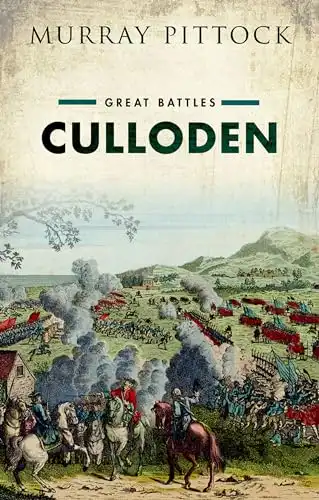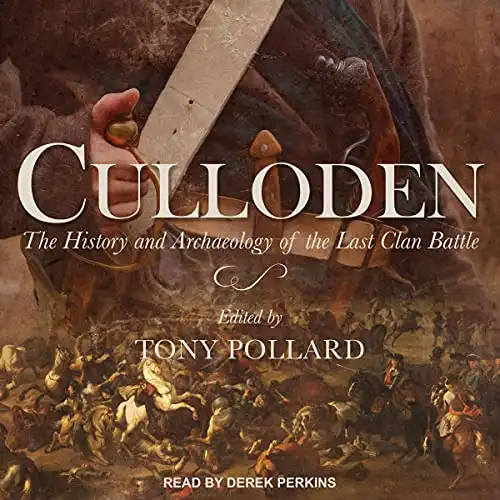“When the day shall come that we do part,” he said softly and turned to look at me, “if my last words are not ‘I love you’ — ye’ll ken it was because I didna have time.”
― Diana Gabaldon, The Outlander Series
The fictional character of Jamie Fraser in the hit series Outlander survived the Battle of Culloden to tell Claire, once again, that he loved her.
But on that fateful day, 16th April 1756, thousands of Jacobites ‘didna have time’ to say their goodbyes. Around 1,500 men lost their lives on the Culloden battlefield. And most of those were from one side, the Jacobite Army.
In the aftermath of the battle, the British Government troops hunted down and massacred many more rebels and Jacobite sympathisers.
We arrived at Culloden as a day trip from Inverness, which was definitely one of the highlights in northern Scotland.
Join us as we take you along on our visit to Culloden Battlefield, delving into the history of how to visit the centre and enjoy our photography from this sombre place.
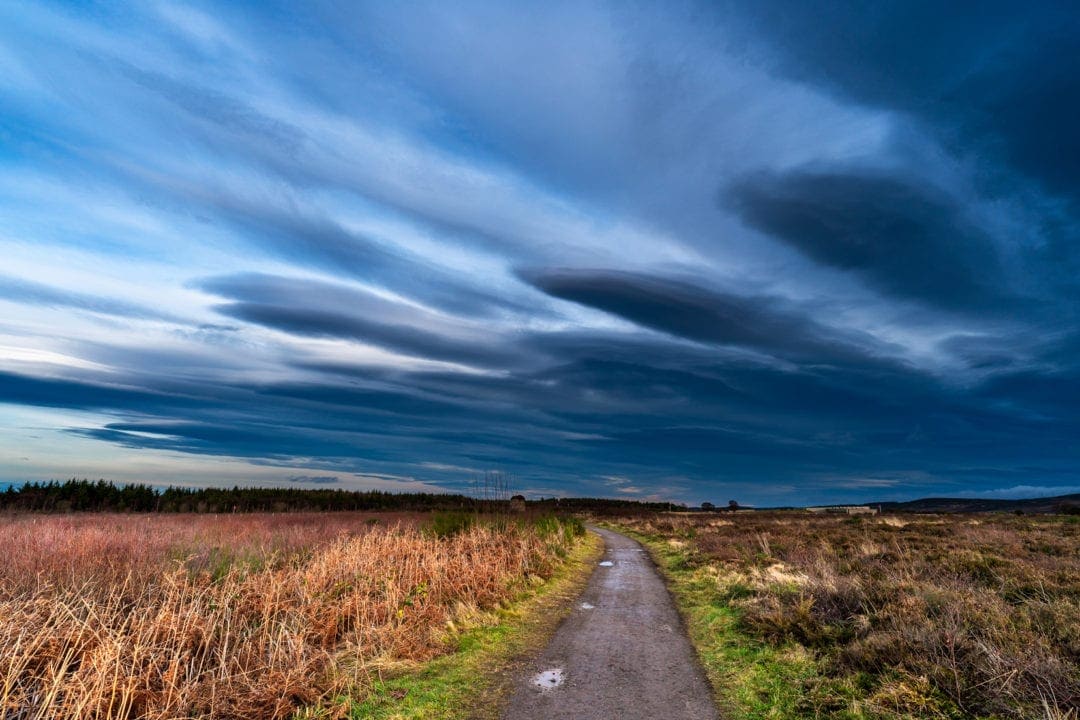
Today, Culloden Moor serves as a solemn reminder of that day’s carnage. The final defeat of the 1745 Jacobite uprising. A moment in history that would forever change the Scottish Highland culture.
But the battlefield, with blood and battered bones long since disbanded in its soils, whispers its own tale
On a visit to Culloden, it’s difficult to ignore the pervading sense of sorrow draped over the countryside.
The Visitor Centre sets the scene, an immersive experience detailing both sides of the story.
But the battlefield, with blood and battered bones long since disbanded in its soils, whispers its own tale. The wind-swept grasses, bolstered by buried bodies, scatter unsung ballads and echo war cries across the bleak landscape of Culloden.

Planning a Trip to Scotland?
- 🚗 Hiring a car? We recommend getting a quote from DiscoverCars
- 🚐 Hiring a campervan? We recommend Motorhome Republic
- ⛑ Arranged your travel insurance? Compare quotes from World Nomads & Safetywing
- 🪪 Order your International Driver’s Licence online here
- 🏩 Booked your accommodation? We use Booking.com to find the best deals
- 🐾 Is someone pet-sitting for you? 🐾 We use and love TrustedHousesitters
- (Get 25% off at checkout for new memberships with our discount code: LIFEJOURNEY25)
A Visit to Culloden
Culloden battlefield attracts over 300,000 visitors each year. Numbers increased dramatically after the Outlander books by Diana Gabaldon were made into the TV series Outlander.
If you aren’t already aware, Outlander is a story about Claire Randall, a World War Two nurse who travels back in time from 1945 to 18th-century Scotland, where she becomes embroiled with young clansman Jamie Fraser. The Jacobite cause and the ensuing Culloden Battle played a large part in the Outlander story.
It’s only a ten-minute drive from Inverness and a must-see stop for history lovers. It’s also an ideal stop on a road trip from Inverness to Aberdeen or further south.
Where is Culloden?
Culloden battlefield and Visitor Centre are in the northeast corner of Drumossie Moor, about 5 miles (10km) east of Inverness, off the A9/B9006.
Address: Culloden, Inverness, IV2 5EU
Culloden Battlefield Map
Culloden Visitor Centre
The Culloden Visitor Centre has a combination of immersive exhibits that tell the history of the two opposing sides, the Jacobites and the Government Army. Opposite walls, which wind through the building, portray a timeline of each side’s story.
Interestingly, each of the walls has a particular wooden panelling design. The Jacobite wall starts organised and turns chaotic, whilst the British Government wall starts with muddled panelling and ends in neat formation.
This is symbolic; things fell apart for the Jacobites and fell into place for the Government forces.
Along with information boards, the Visitor Centre has artifacts and other exhibits that bring the Culloden tale to life. Standing in the centre of the immersive 360-degree cinema allows you to absorb the emotion of the two sides charging into battle.
Further along, an immersive walkway echoes with the mutterings of the two armies preparing for battle.
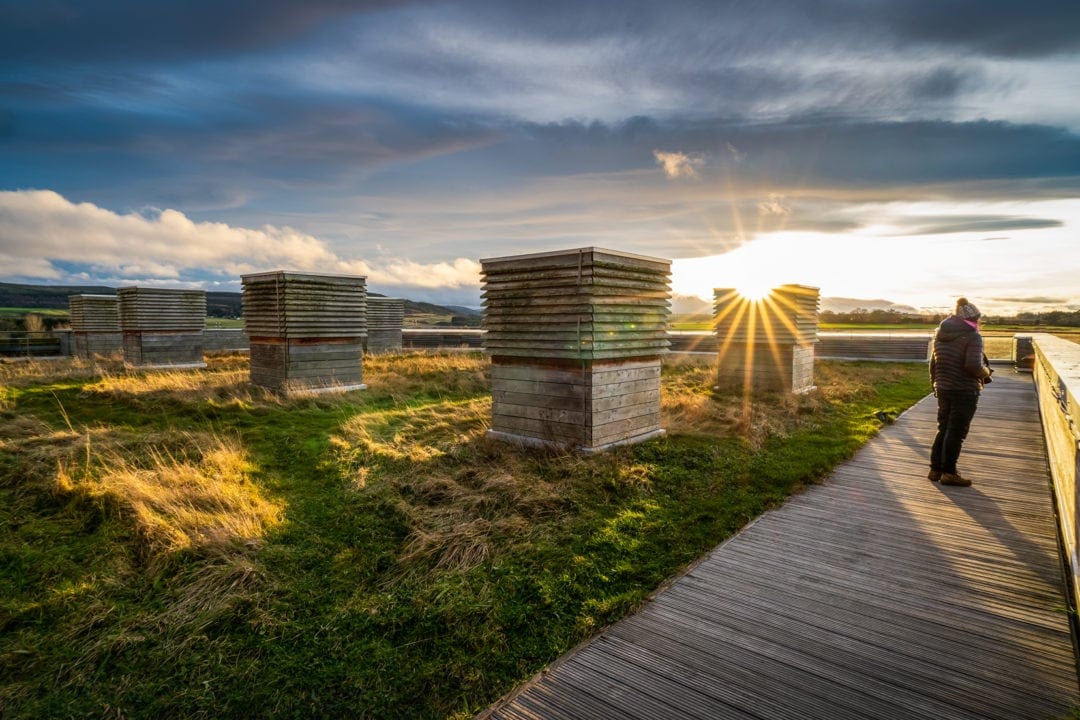
You can buy all sorts of mementos and Highland gifts from the Visitor Centre shop, which includes Culloden Whisky, Harris Tweed Handbags, and Hairy Coos.
You can even buy jewellery made with Culloden heather flowers and an Outlander-inspired amber dragonfly necklace.
One long wall, along the outside of the Visitor Centre, leads towards the battlefield and has stones that protrude from it. This is not a random design. Each protruding stone represents a life lost in the Battle of Culloden.
Note: The battlefield is open every day (free entrance)
You need tickets for the Visitor Centre. (£11.00 – or members of National Trust enter for free)
Photography: You can take as many photos as you like outside, but photography is not allowed inside the visitor centre.
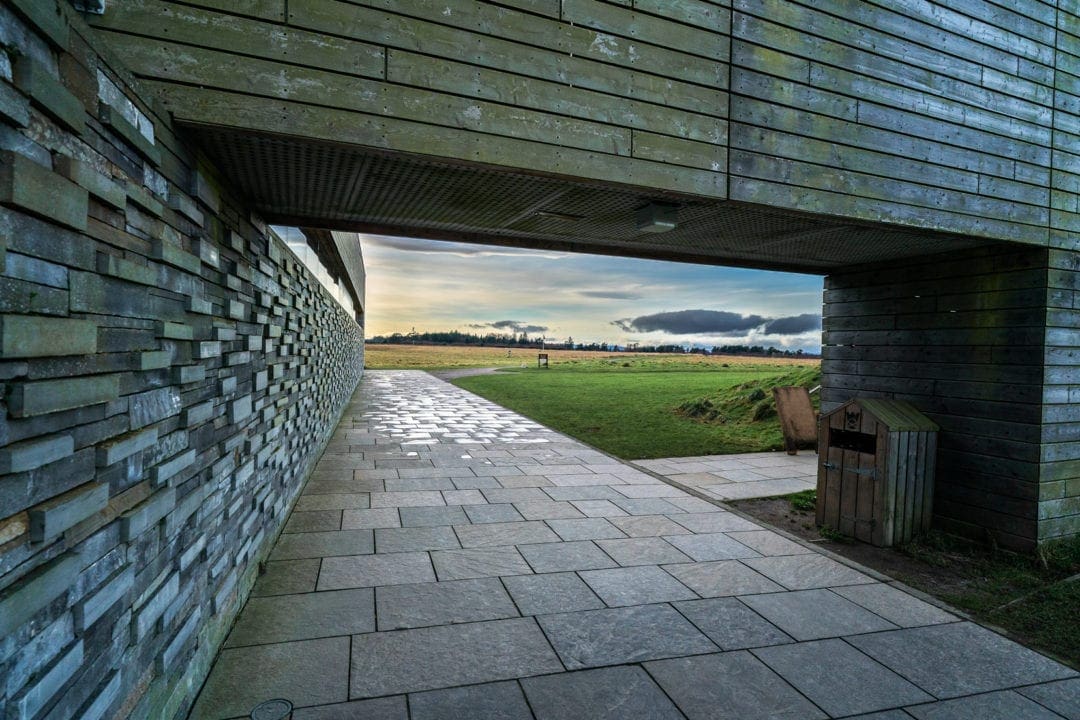
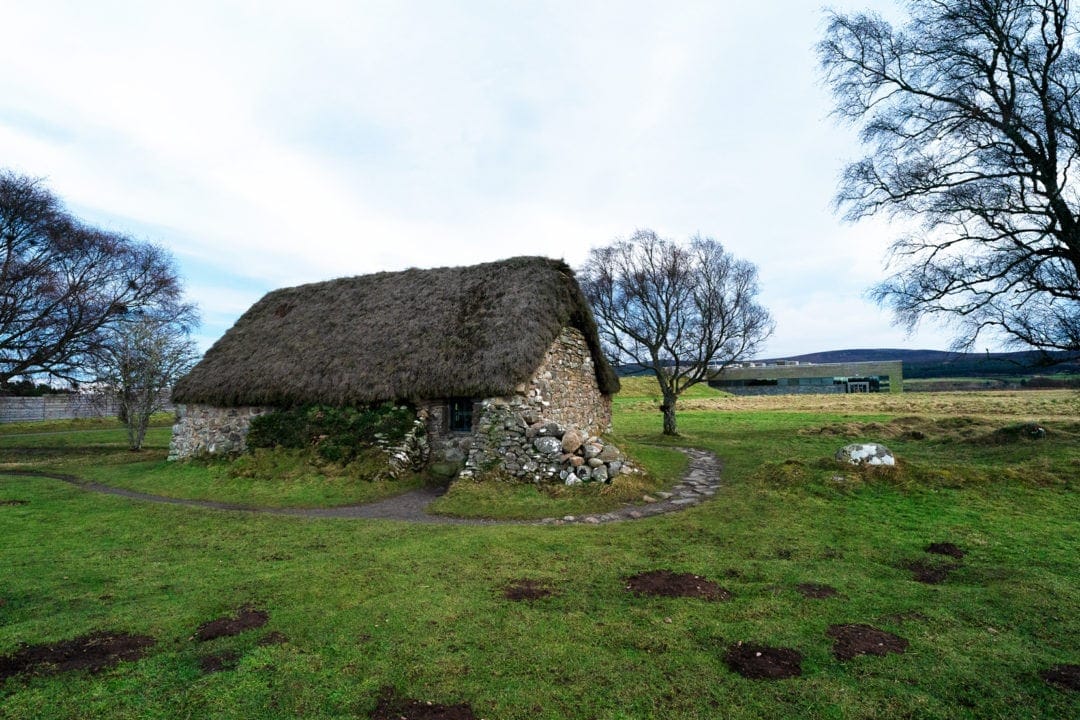
Brief History of Culloden
Scotland’s history is convoluted, complicated and confusing, and this period of its history is no less so; rife with power struggles, religious battles and international conflicts.
Here is a brief and simplified version of events and information to help you understand the lead-up to the Battle of Culloden:
- In 1685, the Stuarts held the throne. James II of England (James VI Scotland) ruled. He was a Catholic and attempted to convert the English to Catholicism. This was not at all popular and in the Glorious Revolution of 1688, he was deposed and exiled to France.
- With the king in exile, James II’s daughter, Mary, and her husband, the Protestant William of Orange, were declared joint sovereigns in 1688.
- The Jacobites were supporters of the Stuart claim to the throne — Jacobus was Scots for James, and Jacobean was the era referred to as the rule of any of King James’.
- Following Mary’s rule, her sister Anne succeeded to the throne, but there was a lack of protestant heirs at her death. So, in 1714, the first king from the Hanoverian line (German Royal house) became King George I.
- George I died in 1727 and was succeeded by another Hanoverian, who became George II.
Meanwhile, in France…
- The son of James II, James Frances Edward Stuart (James III England / James VII Scotland / Old Pretender), who was only an infant when his father took him to France in exile, was born in Rome and he subsequently had a son, Charles Edward Stuart (Bonnie Prince Charlie/ Young Pretender).
And to Scotland …
- The exiled James III England / James VII Scotland / Old Pretender believed that he was the rightful heir to the British throne, and to cut a long story short, his son Charles Edward Stuart arrived in Glenfinnan, Scotland, in July 1745 to lead a Jacobite rebellion. The aim was to restore a Stuart heir to the throne.
- On arrival in Glenfinnan, the prince raised the royal flag and 1,200 Highlanders gathered here to pledge their allegiance to the prince and the cause.

- The British King at the time was George II. His son, the Duke of Cumberland, led the British Government Army, known as the Redcoats, against the Jacobites.
- Not all the Scots supported the Jacobite cause, and equally, not all English supported George II. Scots, English and Irish fought on both sides. Many of the Lowland Scots, near Glasgow and Edinburgh, supported George II. As a result, many families fought against each other during the 1745 Jacobite uprisings.
- The Jacobite cause relied on additional money and support from France, but delays and problems caused the army to suffer hardships.
- After several successful battles and almost reaching London, the Jacobites were double-crossed and given information that caused them to retreat northwards towards Inverness to regroup.
- By this time, the Jacobite Army was becoming weak with few rations.
- The Government Army were close on their retreating heels. Against advice, Prince Charlie ordered his Jacobite Army to undertake a night-time surprise attack. It was the 25th birthday of the Duke of Cumberland, and the Government troops would be celebrating. The idea was that the Jacobites would attack as they slept after a night of partying.
- However, the plan didn’t account for the marshy ground and the distance to be covered. A tall ask for Prince Charlie’s already weakened army. The Jacobites were forced to return to camp.
- The next morning, the Government Army arrived at Culloden, well-fed, with horses, muskets, and canons.
- The Jacobites, who had not slept or eaten, prepared for battle.
The Battle of Culloden
On the 16th of April 1746, the Jacobite rising came to a horrific end at the Battle of Culloden. Between 1,500 to 1,600 men were killed in less than an hour.
The battle lines and details of the attack are marked on the battlefield at Culloden, and the Visitor Centre provides immersive films and accounts of the battle.
Not only were the Jacobite troops exhausted, but the wide-open moorland of Culloden wasn’t at all suited to the highland charge. Before the cry to attack was given on the Jacobite side, canon fire was already decimating the Jacobite line.
When the call to arms was finally given, the Jacobites were left with little choice other than to charge into the waiting bayonets, musket shots and cannonballs raining down on them.
The bloody battle ended soon after it had begun. Piles of dismembered bodies littered Culloden Moor. This was the last pitched battle to be held on British soil.
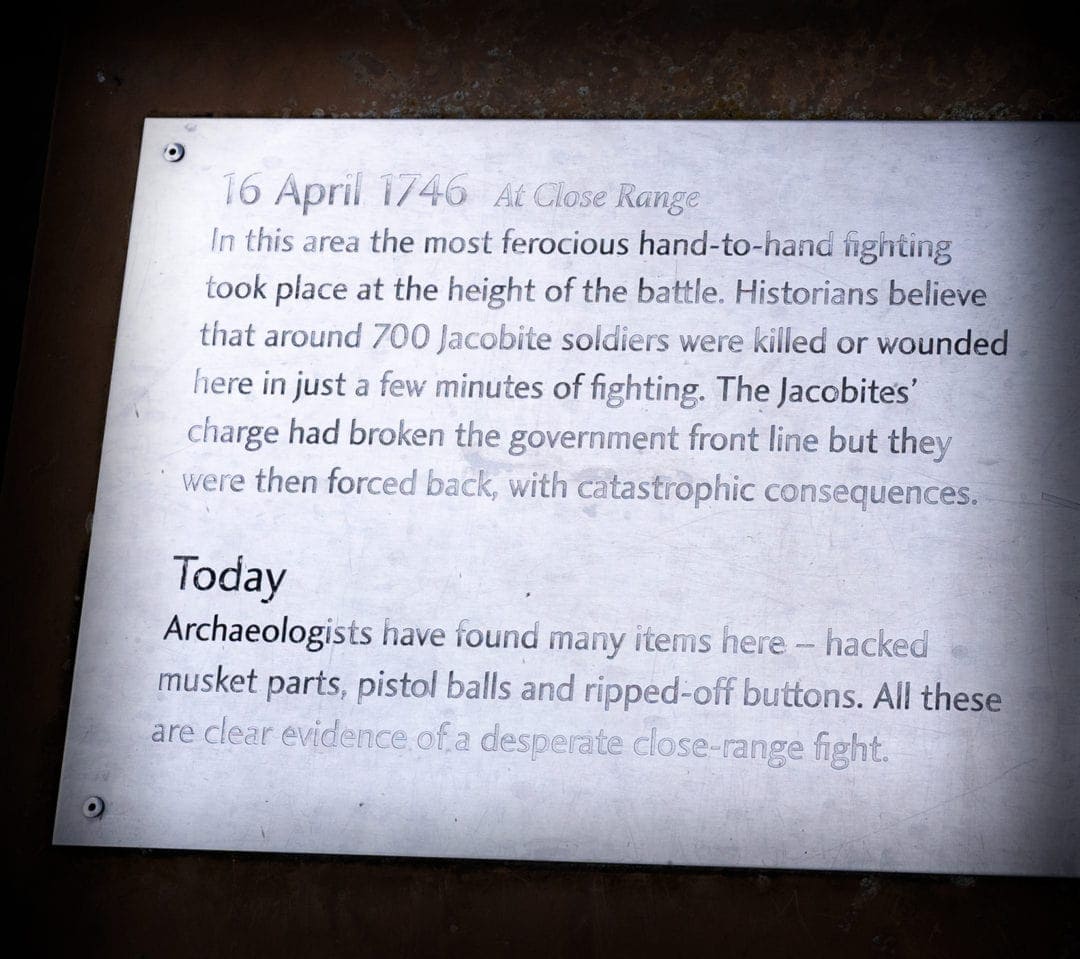
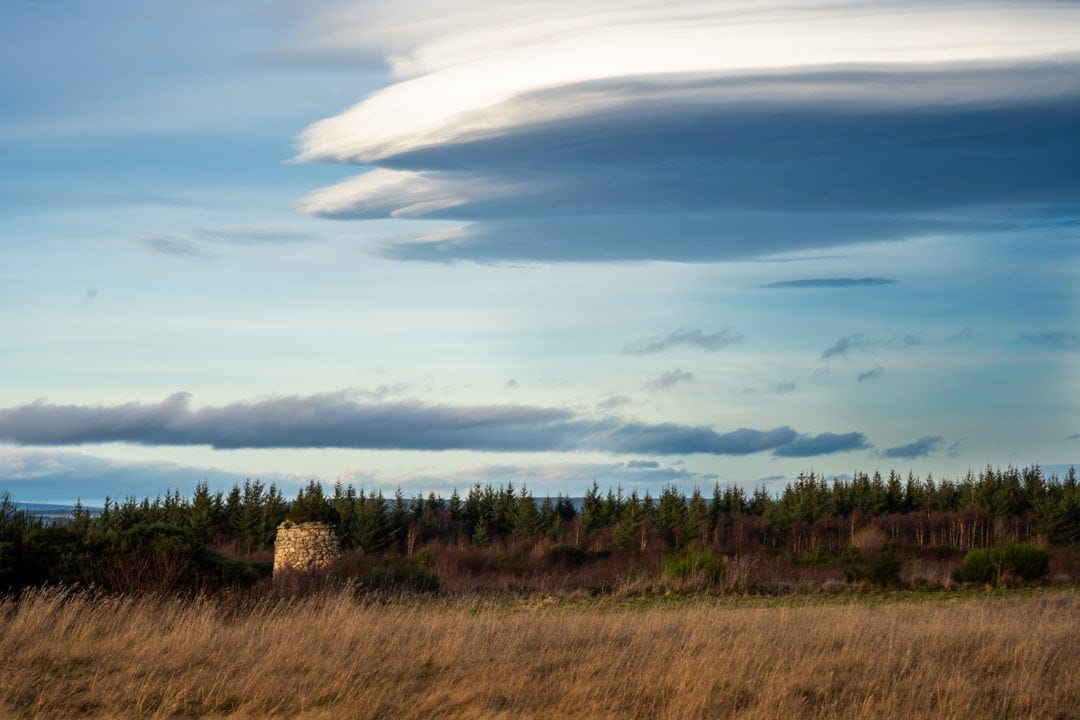
Culloden Battleground
Stepping out onto the battlefield from the visitor centre, you’ll find red flags which mark the battle line of the Government army. 9000 Government troops gathered here for a battle that was almost won before it even began.
Blue flags blow in the wind at the opposite end of the field, marking the battle line where the 5000 Jacobites prepared for the fight. They fought for honour, their clan, Scotland, and their lives.
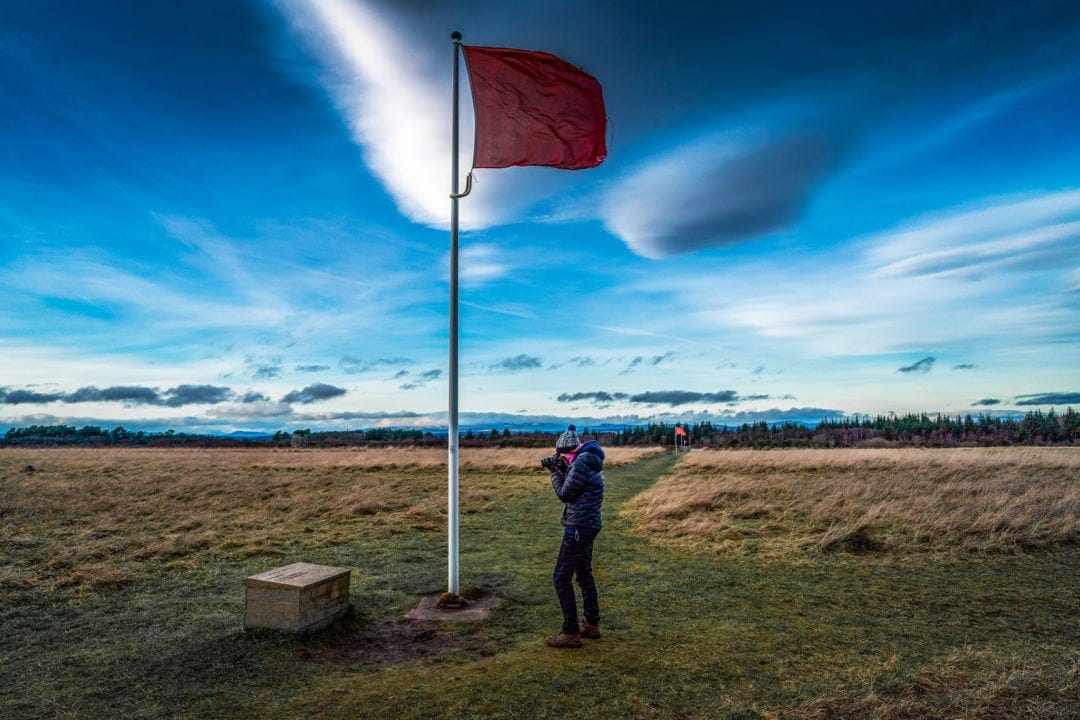
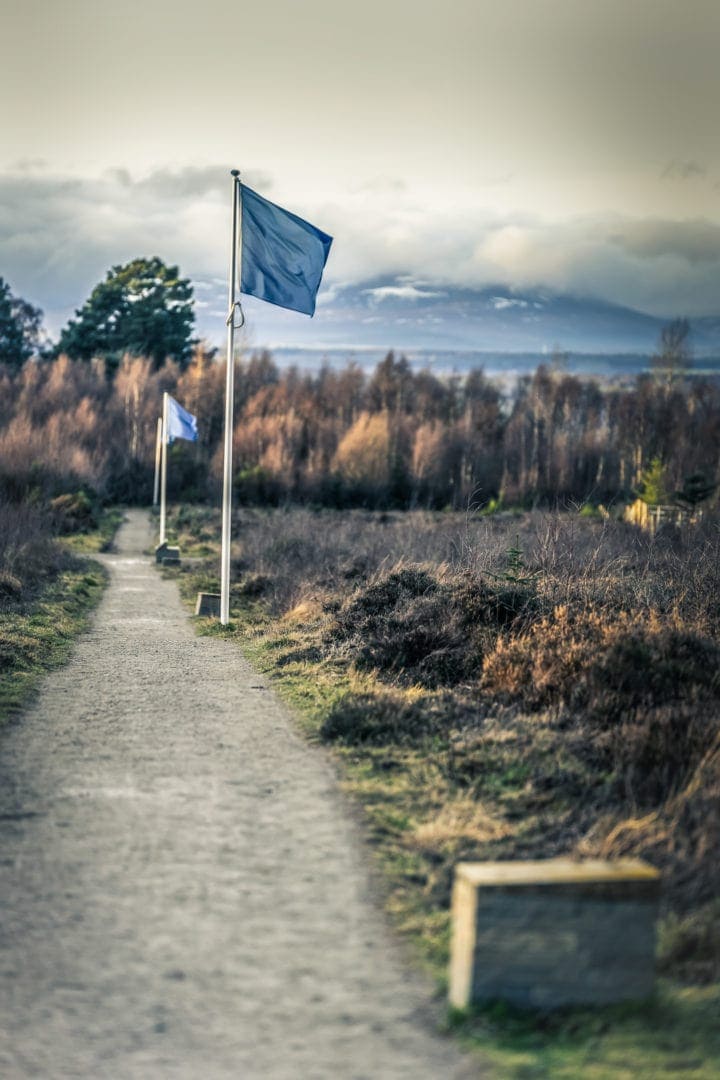
To this day, between 1200 and 1600, bodies are buried in mass graves under the turf of Culloden. Stone headstones, added later, in 1881, stand as reminders of the clans and regiments who fought and died here.
A Memorial Cairn was also built as a tribute to the various clans and regiments that were defeated on that harrowing day.
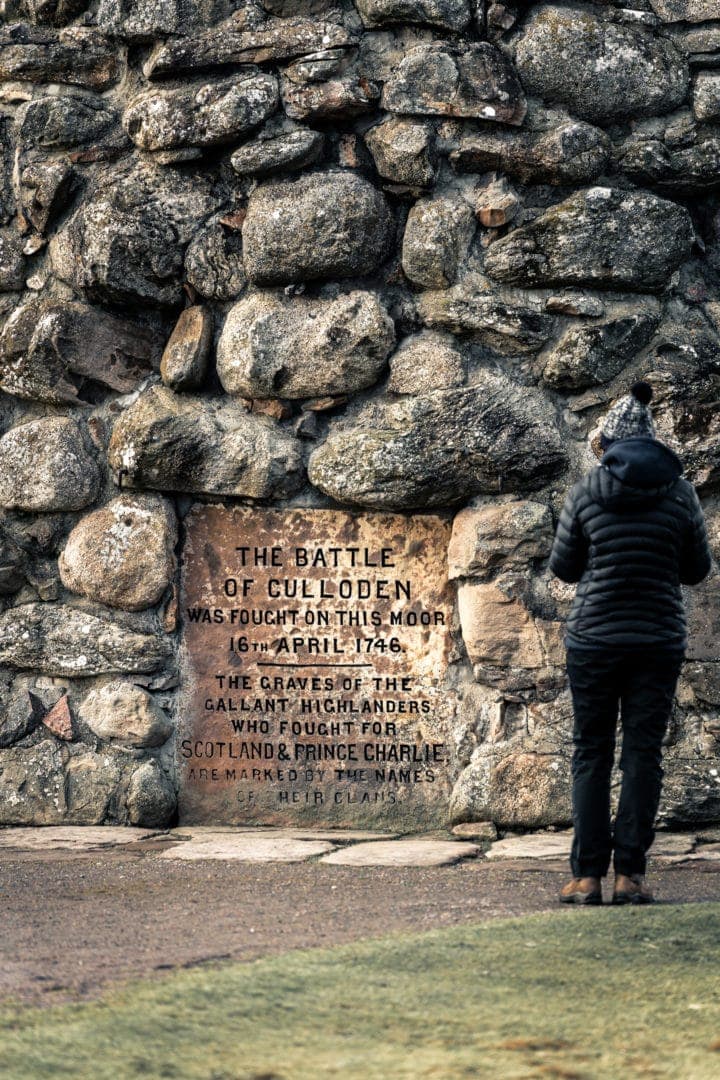
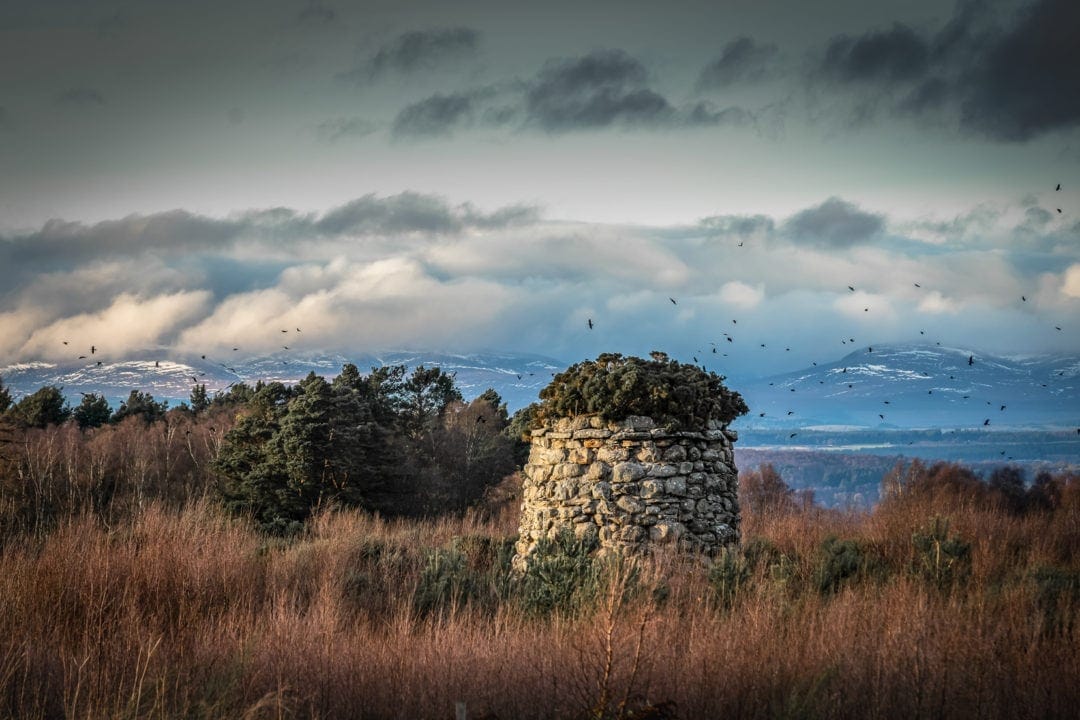
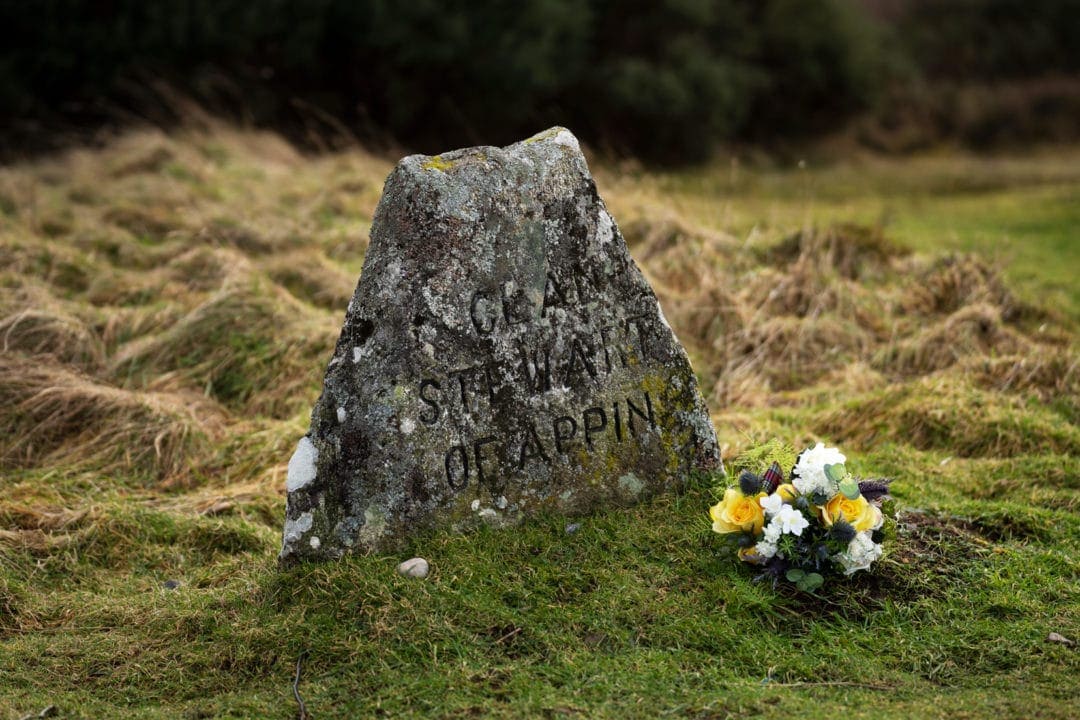
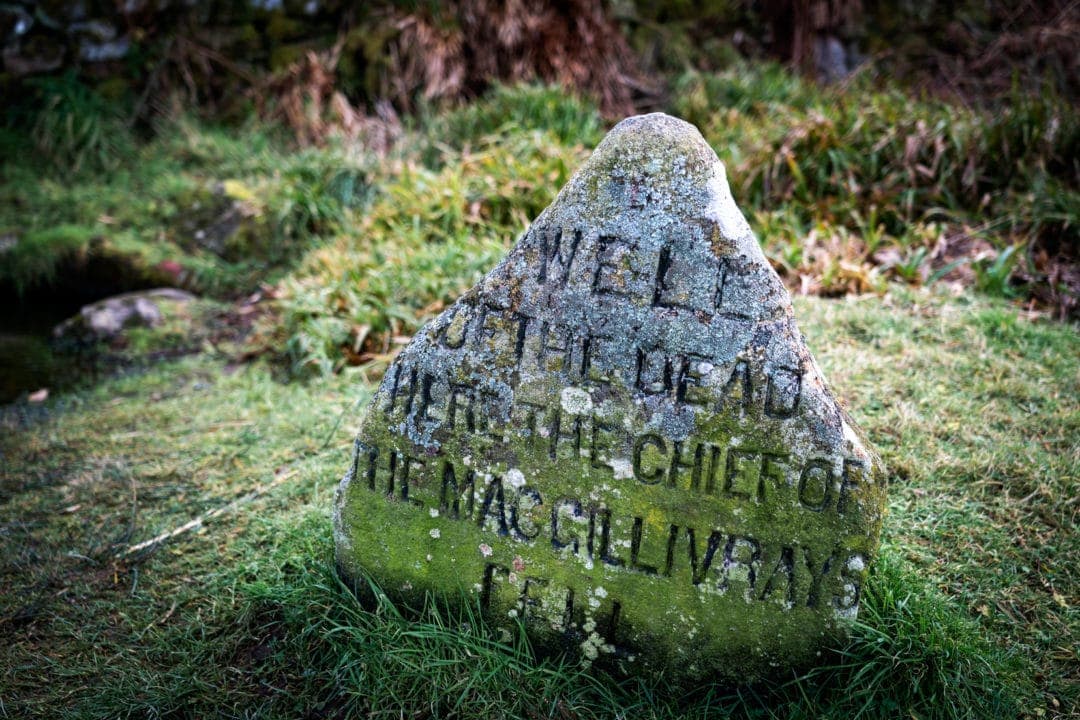
Entering the battlefield, you’ll find the 18th-century Leanach Cottage on your right. It was used as a field hospital by the English after the battle and was lived in until 1912 before being restored.
The thatch roof is made of heather grown on the battlefield, and the walls with stones and turf. Leanach Cottage was the original Culloden Visitor Centre.
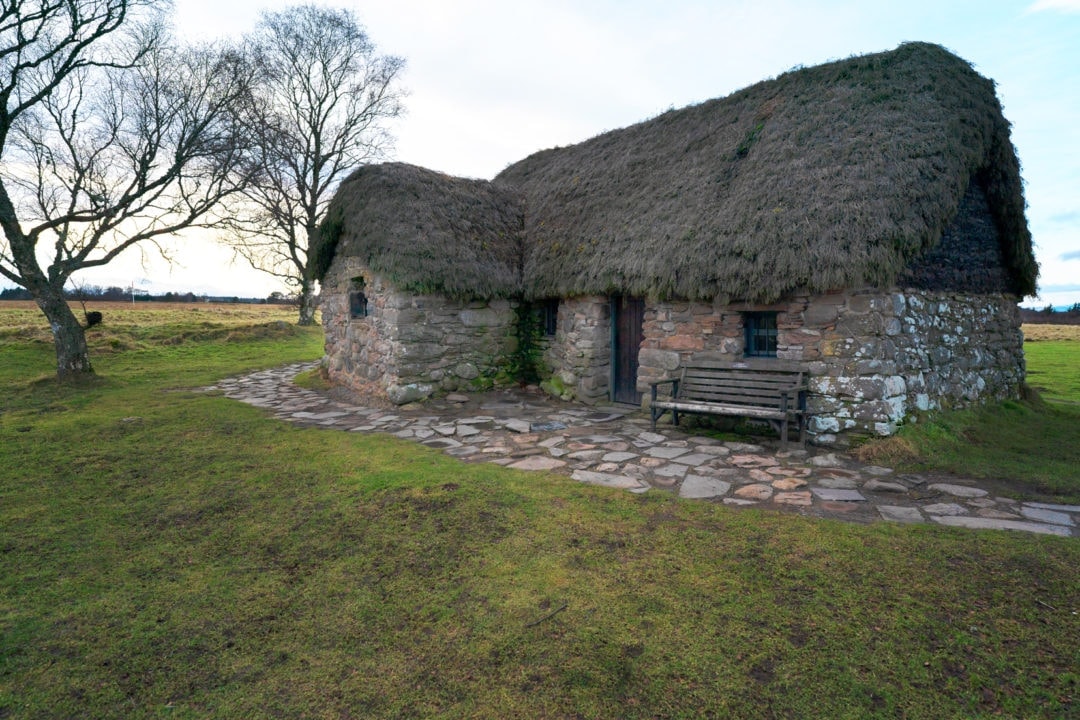
The aftermath of the battle and its impact on Scotland makes Culloden Battlefield one of the most poignant places in the Highlands.
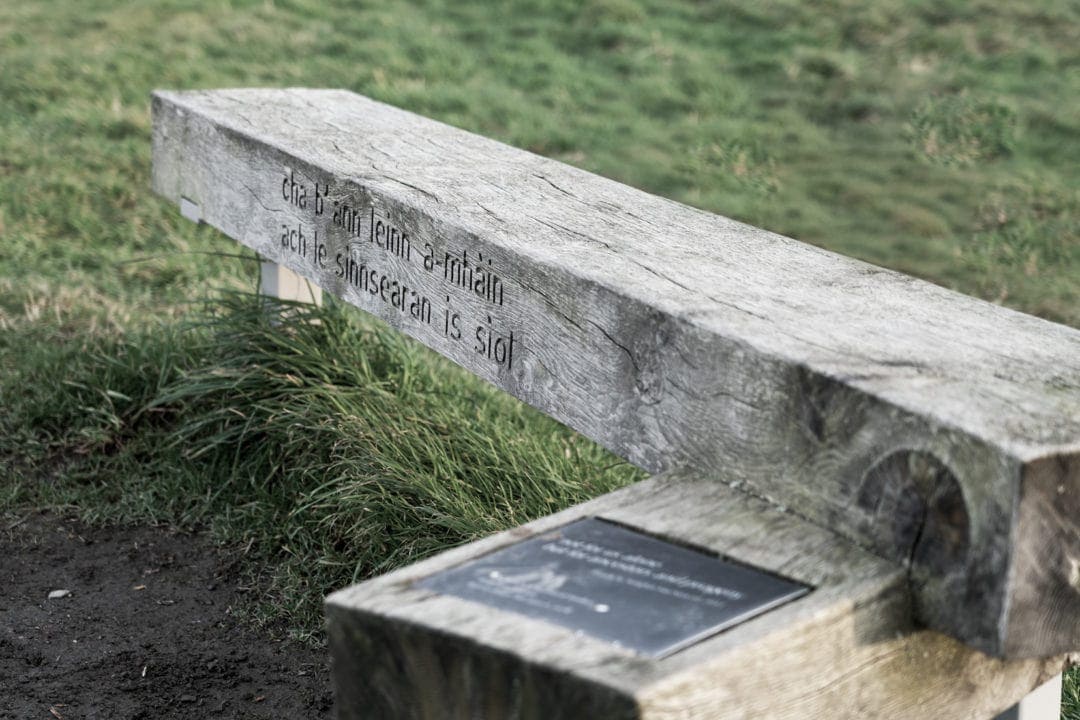
The Aftermath of the Battle of Culloden
When the fateful Battle of Culloden came to an end, many of the wounded Jacobites were clubbed to death or shot. The Duke of Cumberland, known later as ‘The Butcher,’ ordered all rebel Jacobites and those supporting them to be hunted down and killed.
Some of the remaining Jacobite Army gathered at Ruthven Barracks to continue the fight, but word came from Bonnie Prince Charlie, ‘Everyman for himself‘. So, with Prince Charlie turning his back on his supporters, the Jacobite rebels were forced to disband and became fugitives.
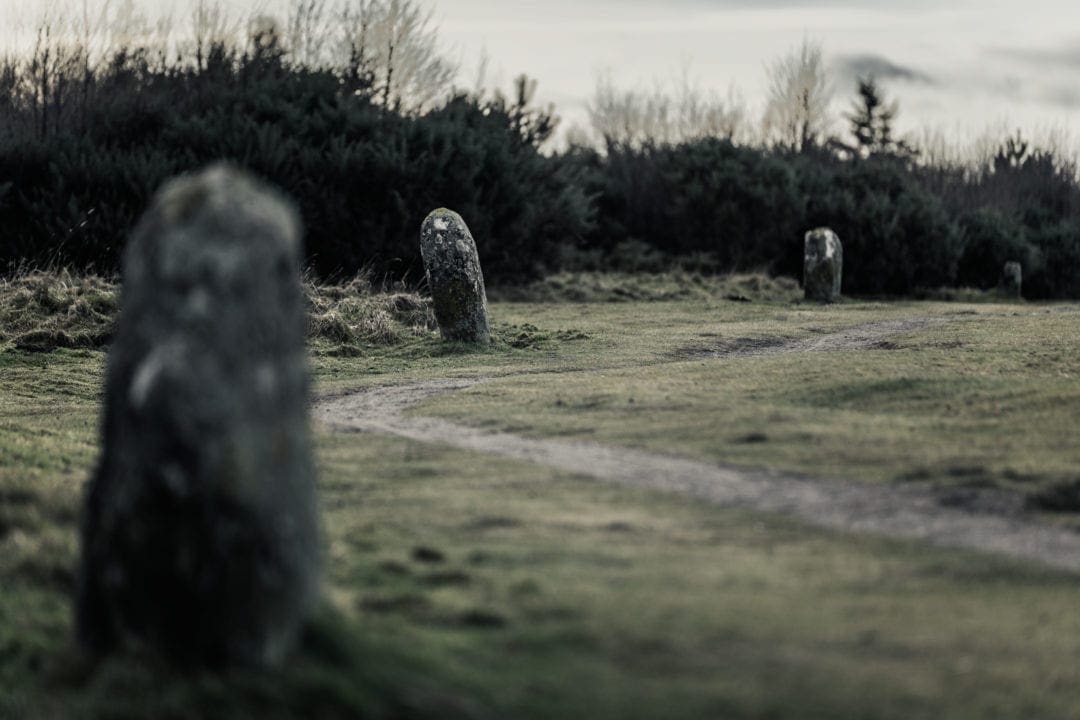
The Pacification of the Highlanders ensued, and the actions of the army, led by Cumberland, are said to have been the worst atrocities in the history of the British Army. The wearing of highland dress, clanship, the bearing of arms, and speaking Gaelic were all outlawed in the Act of Proscription in 1746.
The Highlanders’ way of life, clan system and language changed forever.
Meanwhile, Bonnie Prince Charlie remained hidden until Flora Macdonald famously helped him escape, dressed as her maid to the Isle of Skye. The prince then found passage to France. He died in Rome in 1788.
Personal Experience of Visiting Culloden
Truth be told, I had never heard of Culloden until I watched the TV series Outlander. The show touches on the devastating loss of life that occurred at Culloden.
When we moved to Aberdeen to live for a year (our Africa travels were on hold due to COVID-19), I really wanted to visit the site that played such a huge part in Scotland’s history.
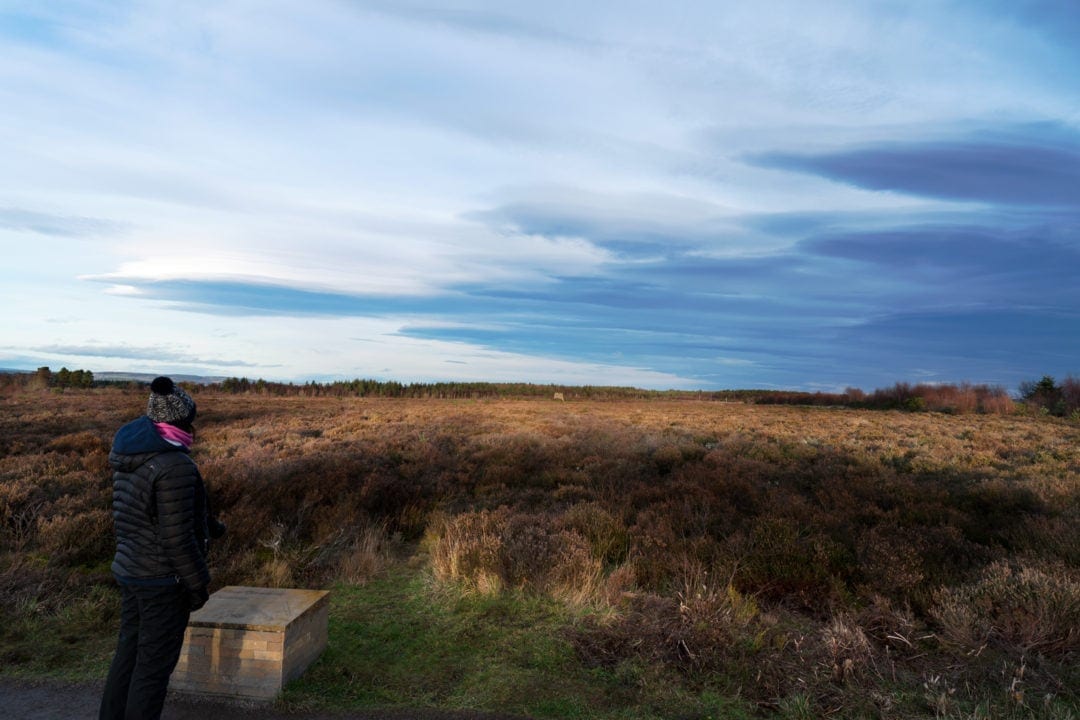
As I stood on the blue flag-marked battle line of the Jacobites, my heart ached. With damp eyes, I gazed across the moor. The sun was falling towards the horizon, reflecting off the golden shards of grass, bending gently in the wind. The silence deafening with the screams of the fallen.
No longer a fictional battle with the handsome Jamie Fraser heading up the Fraser Clan, but a real-life event and the slaughter of over a thousand men.
The Fraser Clan stone, visited by so many Outlander fans here, doesn’t mark the death of a fictional Clan Fraser, but real lives. Real men. Real Frasers, Maclachlans, McDonnells, McDonalds, Chisholms, MacLeods, MacLeans, Farquarsons, Camerons, Gordons, Stewarts and many more.
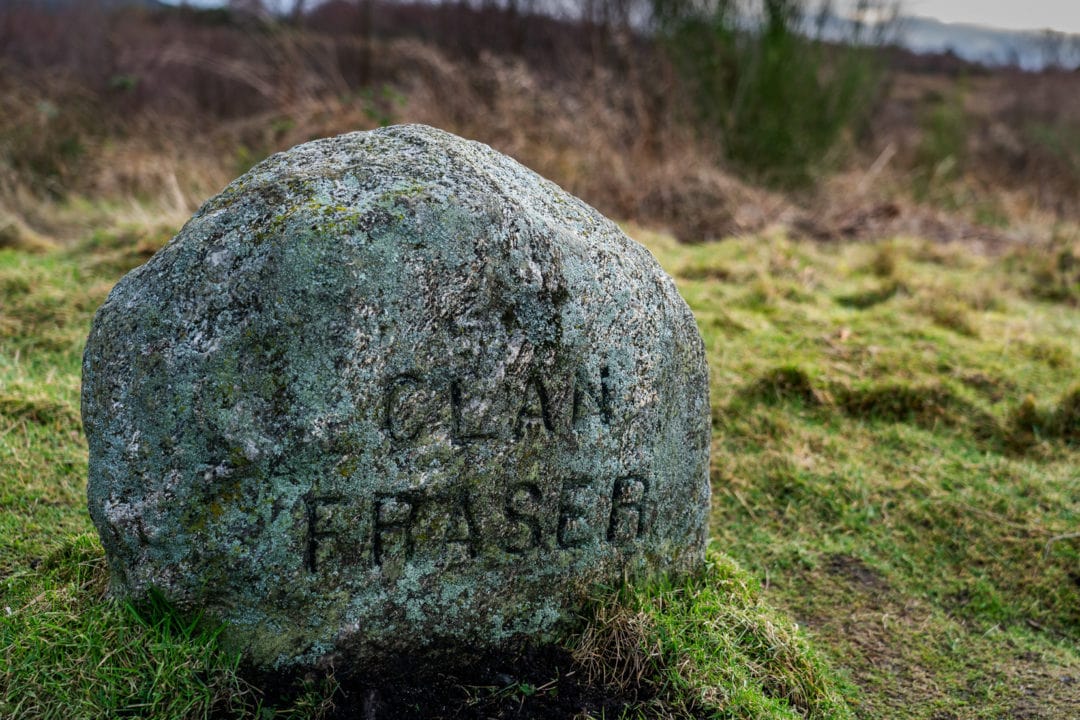
As the sun sank in the sky, it shone a golden hue across Culloden Moor. A more hopeful image of this once blood-splattered field.
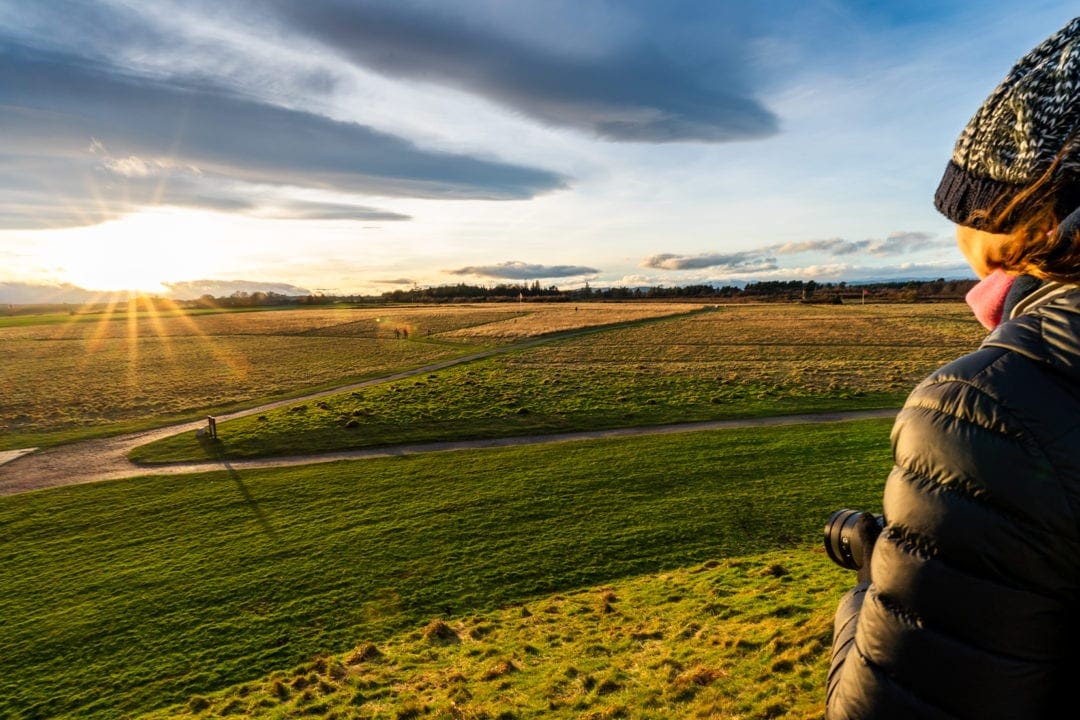
More on the Battle of Culloden
If you are interested in finding out more about the history of the Battle of Culloden, I recommend watching this video by Bruce Fummey.
For more short stories and facts about Scottish History, told with a good dose of humour, I would recommend watching more of Bruce Fummey on his YouTube channel, Scotland History Tours.
A Visit To Culloden … That’s a Wrap
I may have arrived at Culloden with Jamie, Claire, and tales from Outlander swirling in my mind, but I left, not with a connection to the fantasy characters of this tale, but with a heaviness of heart for the real ones.
For those who lost their lives, not only here but in the ensuing atrocities in the aftermath of the Battle of Culloden during the pacification of the Highlanders.
The saddest part of all of this is that humanity continues to divide, fight, and take lives in the name of religion and power.
Maybe that is why we enjoy fiction and fantasy. In Outlander, our hero survives. There is the hope of a happy ending.
As we drove away, a blood-red sunset soaked the sky.
For more adventures in Scotland – pop over to our Scotland page to discover all the amazing places to visit throughout Scotland.
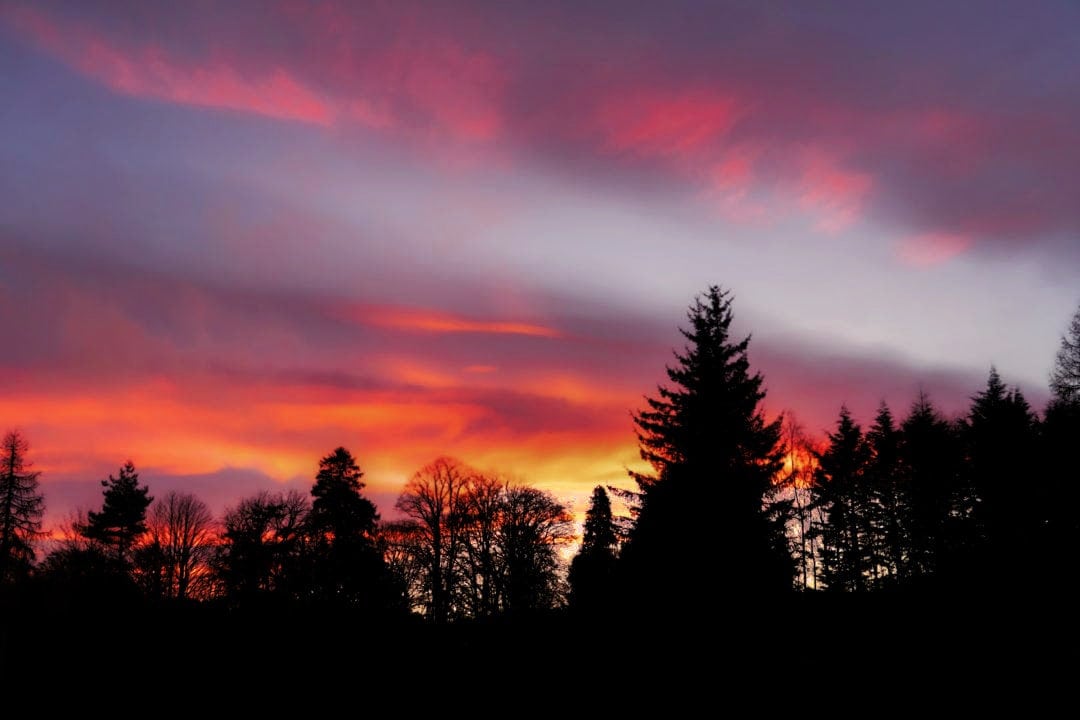
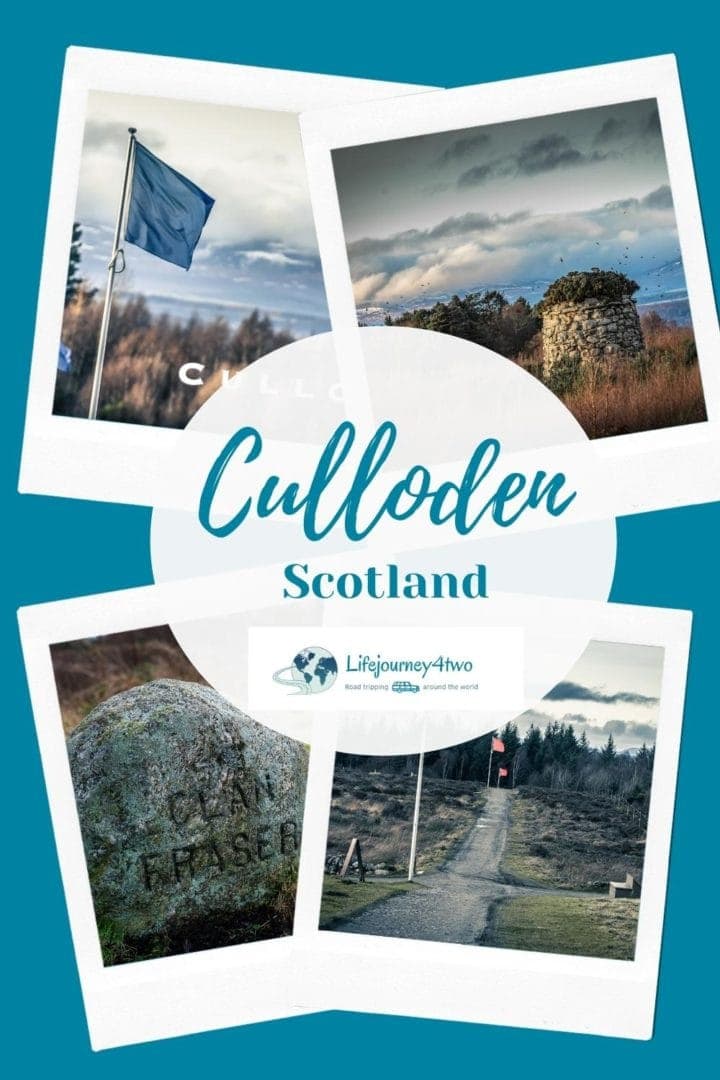
You May Also Like to Read:
PLANNING YOUR TRAVELS?
These are some of the travel resources we use when planning our trips.
- 🚘 Car Hire: We use DiscoverCars.com
- Motorhome/Campervan Rental: We highly recommend the Motorhome Republic
- 🛏 Book Accommodation: We use Booking.com to find accommodation that suits our budget
- 🆓 Free Accommodation: Check Out TrustedHousesitters here
- Activities and Experiences: Get Your Guide and Viator
- Travel Insurance: World Nomads
- 🥾 Travel Gear and Accessories: Check out our top picks here — Lifejourney4two page on Amazon
- 🛒 Wall Art: Shop our ETSY store
For a more thorough list visit our Travel Resources page here.



